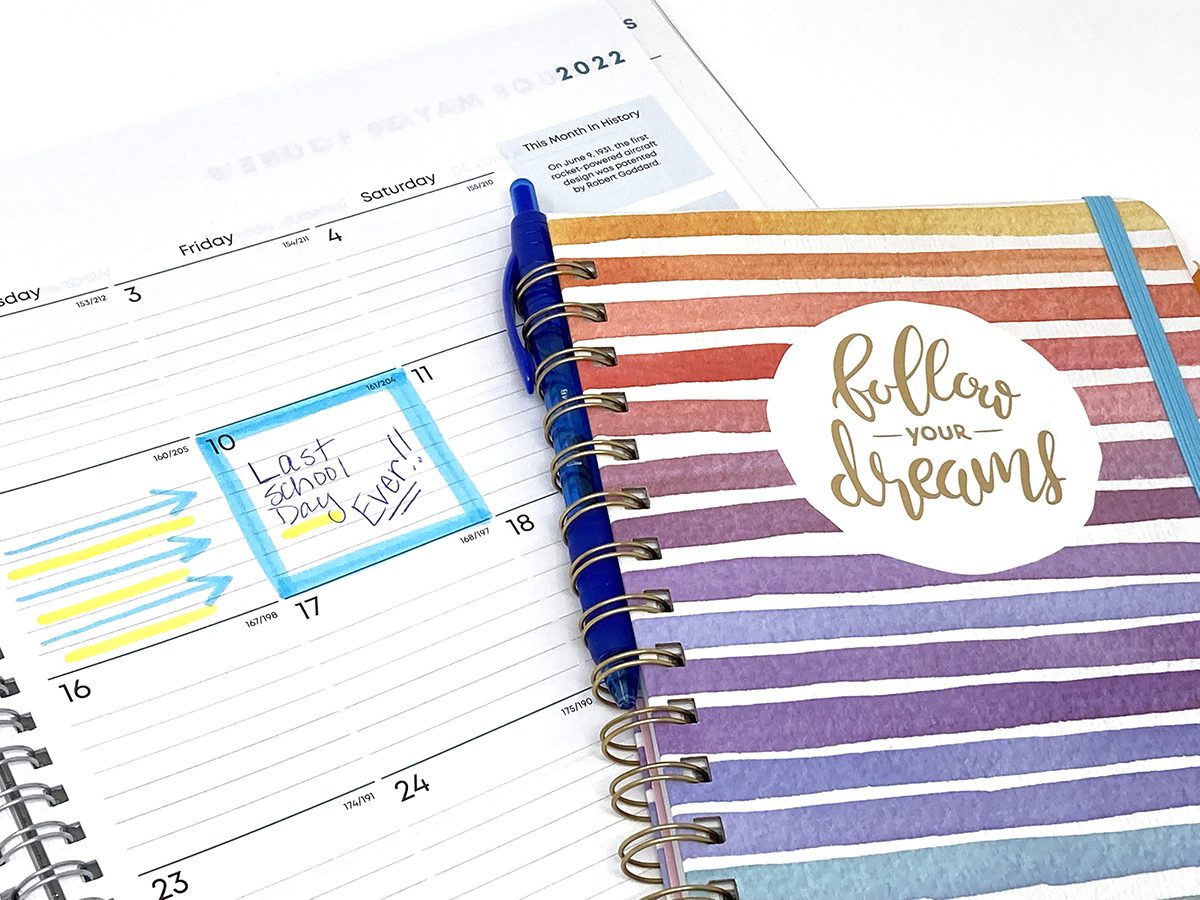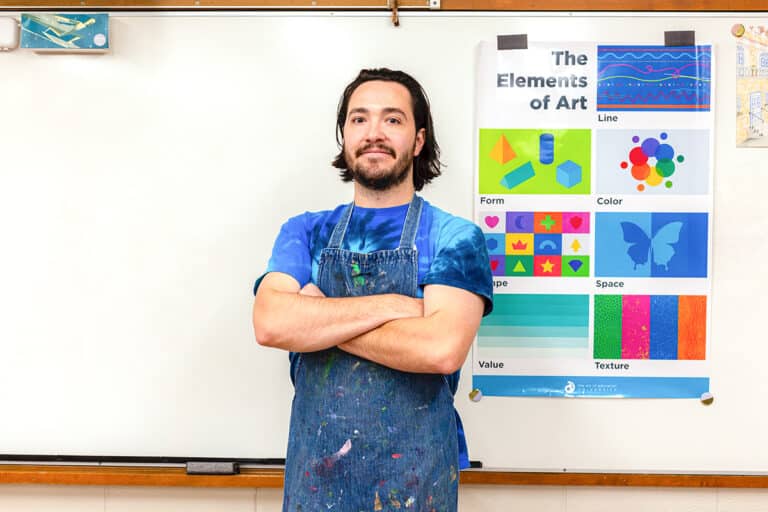Making the decision to leave the classroom can be heartbreaking. Teacher guilt can be a real struggle. You may be considering a pivot from teaching art so you can explore other careers. Or you may be transitioning into another role within the education space. You may be preparing for retirement or choosing to leave the field to support your mental or emotional health. Whatever your reason, it can be a scary move to make.
In an article published by the nonprofit RAND Corporation, estimations suggest “nearly one of four teachers said they were likely to leave their jobs by the end of the 2020–2021 school year, compared with one in six teachers who were likely to leave, on average, prior to the pandemic.” A more recent article by NEA reports, “one out of three NEA members say the pandemic has made them consider retiring or leaving the profession early.” Teachers may be feeling increased pressure due to the ongoing pandemic, but, in some cases, they may have recognized that there could be more for them beyond the four walls of the art room.
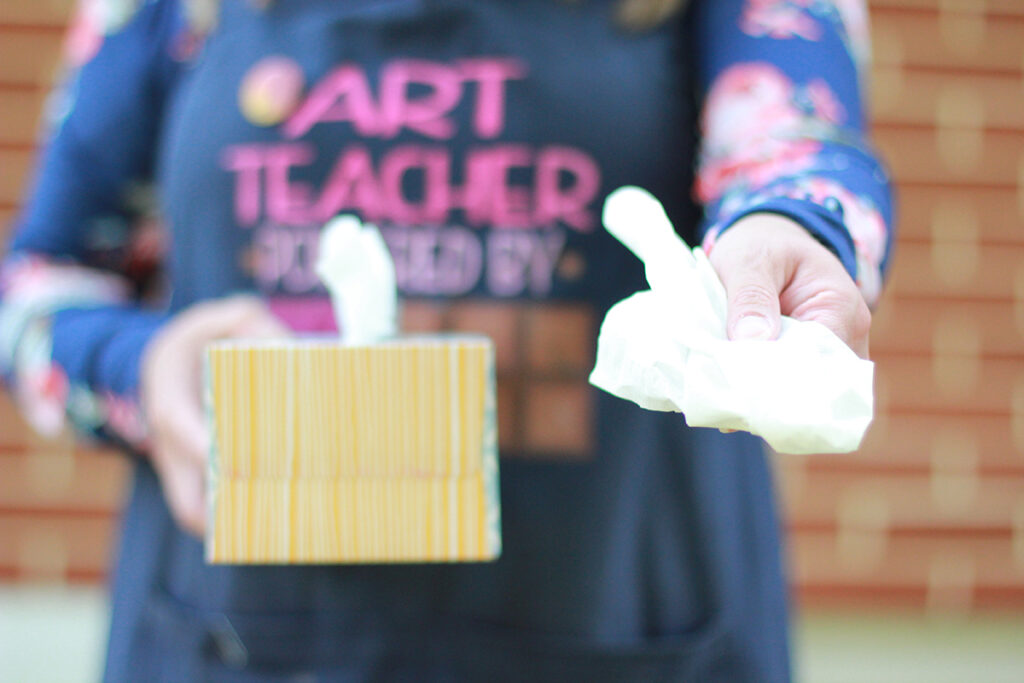
If you are considering stepping away from the classroom, it is important to know that, whatever you decide, AOEU will support you.
Once you begin sensing something deep inside telling you to explore options outside of art education, it’s important to validate those feelings. You are not the only art teacher having these thoughts and feelings. Thinking about leaving the only career you once dreamed of retiring from can be emotional. You may experience sadness, confusion, denial, or just the opposite—happiness.
You may find yourself asking questions like, “What other jobs are there for art teachers?” or, “I think I want to leave the classroom, now what?” First, listen to your intuition. If you know, in your heart, you need a change, then explore your options because they are out there waiting for you. You are not alone in this journey called life. Many former art teachers have taken actionable steps to shift their careers in a different direction, and that’s okay. In fact, many former art teachers work with AOEU. (We would love for you to join the AOEU team. We continue to update our job postings, so make sure you check back for the most up-to-date information!)
Here are four considerations as you prepare to transition out of the art classroom.
The thought of stepping away from your art room can be overwhelming when you don’t know where to start. Tap into your background. As an art teacher, you can see the bigger picture and break it down into manageable steps. You know how to focus your energy on your ideas and work. You know how to talk with others and offer new perspectives. You know how to inform yourself and work towards success. You know believing in yourself is part of the process. Below are four things to think about as you move ahead in this transition.
1. Prepare for a mindset shift.
You have been rocking the art teacher gig for quite some time now, and even the slightest thought of leaving that behind can make your heart race. Believing this change can happen begins with you. Teaching is one of those professions where people enter intending to stay until retirement. If you find yourself desiring something different, you may need to change your inner dialogue from, “I’m just a teacher, what else can I do?” to, “My years of teaching provided me with experience that can be transferred into other career possibilities.” You already have the skills and experience to get you to your next role. You got this.
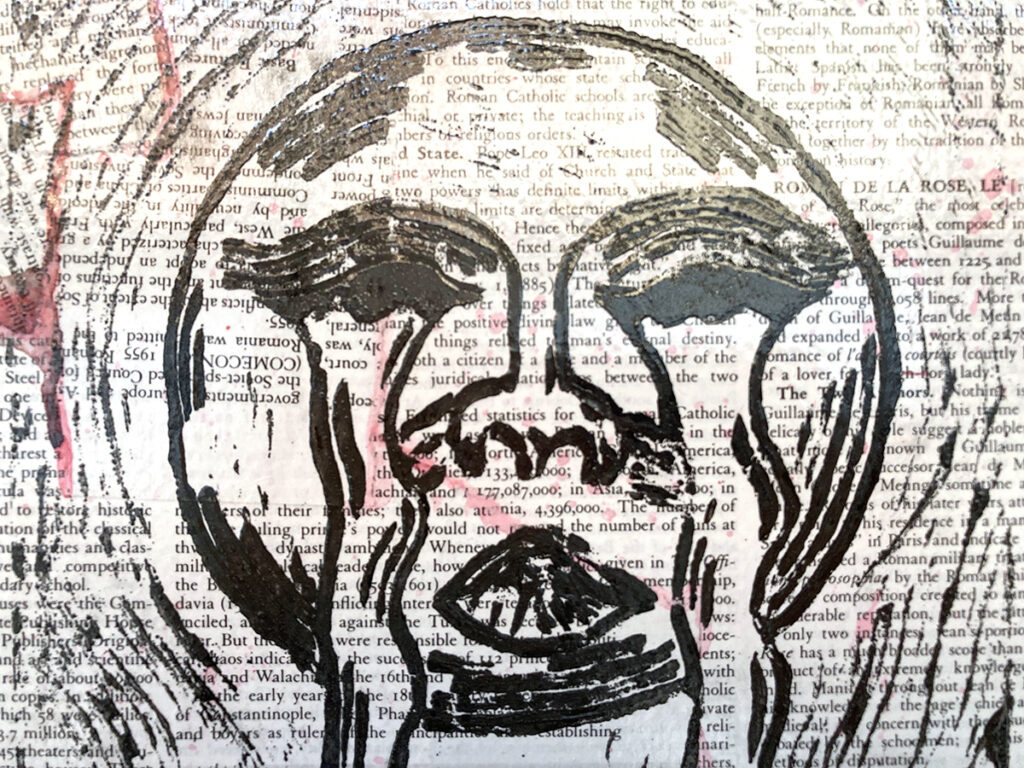
2. Expect pushback.
When you confide your intentions with others, you may face conflicting opinions. Some of your close family or friends may question you, especially after the crazy years educators survived during the pandemic. You may hear statements such as, “It will be different once school returns to normal,” or “You’ll feel better once you are back in your classroom and not on a cart.” In the end, this is your life. You have to choose what is right for you and not base it on what others think.
You may also have feelings of teacher guilt. Just the thought of missing a day of school can initiate feelings of guilt for some art teachers, let alone leave the classroom altogether. If you keep thinking, “How can I leave my students?” you may want to prepare yourself to work on those conditioned beliefs. Every day, as soon as you wake up and right before you fall asleep, say to yourself something like, “My students will be okay with another art teacher, and I will be okay in a new position,” or “My students will be okay, and so will I.” Teacher guilt is real, but it doesn’t have to be a struggle.
3. Learn from those who have been in your shoes.
Remember, you are not the first or last teacher who felt a nudge to escape the traditional teaching scene. Thankfully, there are supportive resources to guide you through the transition process. Teacher Career Coach with Daphne Gomez and Teacher Transition with Ali Parrish both offer free and affordable resources for teachers seeking other career opportunities that don’t need for another degree. You can ease into the exploration phase by reading the blogs or listening to the podcasts found on their websites. If you desire more resources, both of these former teachers have opportunities for you to dive deeper.
4. Rewrite your resume.
The skills and experience you have learned as an art teacher qualify you for many other positions outside of the art room. An important step to take at the beginning of your transition is translating your teaching experience into applicable qualifications. When you begin exploring other job descriptions, you may feel a sense of imposter syndrome. Don’t let this fill you with self-sabotaging and negative self-talk. Learn how to rewrite your resume into a language that translates your skills and experiences into a broader context. This will help you build the confidence you need to start making steps towards change.
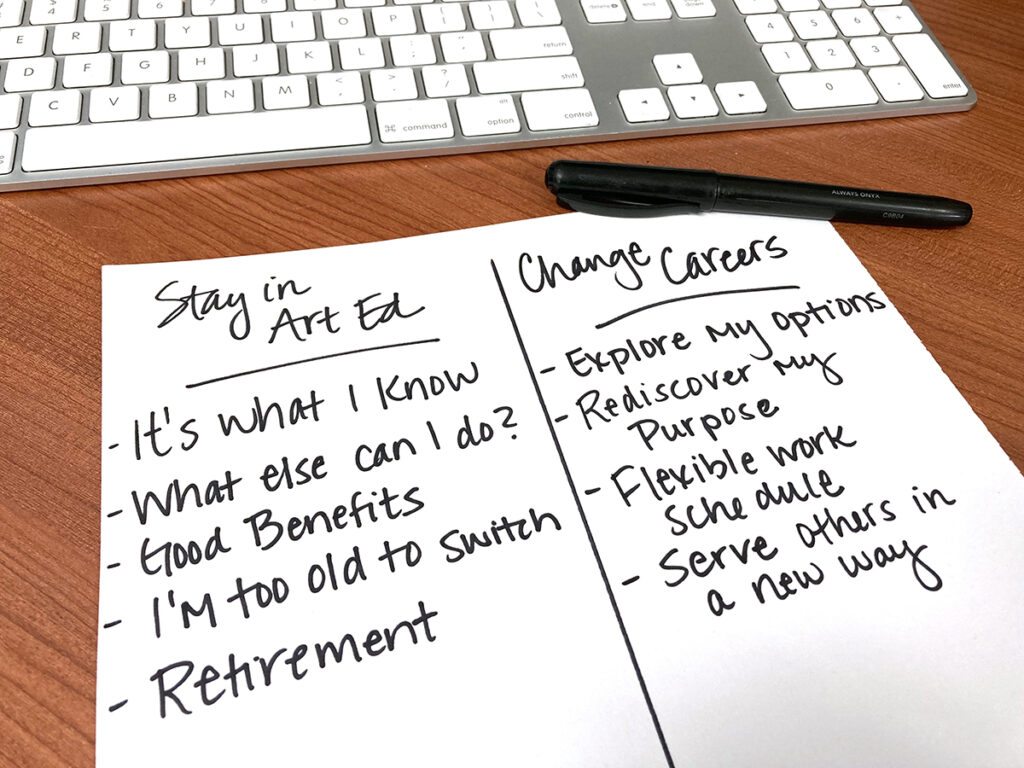
There are many career options to explore for a transitioning art teacher.
Knowing you are ready to learn more about career exploration outside of art education may cause confusion. There are many options beyond the art room or traditional public education. With the creative and visual skills you possess, on top of everything you have learned and experienced in the art classroom, there are career paths to help make the transition a smooth process. Check out the options below to discover something new.
Customer Success
Your communication skills and desire to build relationships will help you in a customer success role. Responsibilities may include onboarding new clients, providing training and continuing support to customers, and appealing to customer satisfaction.
Instructional Design
As art teachers, we are experts in designing and providing teaching and learning experiences from beginning to end. Instructional design roles may appeal to you if you enjoy behind-the-scenes curriculum development, designing instructional materials and resources, technology integration, collaboration, and assessment strategies. You will work with Subject Matter Experts (SME) to create content specific to the training you design.
Curriculum Development
Your knowledge and expertise in building curriculum, curriculum mapping, research, developing learning objectives aligned with standards, engaging learning activities, and assessments will be in your favor when applying for this position. If you need to brush up on your curriculum development skills, check out our course, Designing Your Art Curriculum.
Project Management
Art teachers constantly manage multiple projects, plan and execute events, build relationships, mentor and coach people, and monitor progress towards a deadline. These skills are only some of what you already have mastered to perform the role of project manager.
Learning and Development
Training, instructional design, adult learning, and creating an engaging curriculum are some of the responsibilities in a learning and development role. Use adult learning theory to guide the learning you create in eLearning, virtual instructor-led, or face-to-face sessions. A lot of what you already know and do as an art teacher taps into this position, making it a natural option for you.
Having an idea of roles you are already qualified for is helpful in your pursuit of a career transition. If you know anyone who has been in your shoes or made the change from an art teacher to something different, it may be reassuring to talk with them, ask questions, and lean on them for guidance.
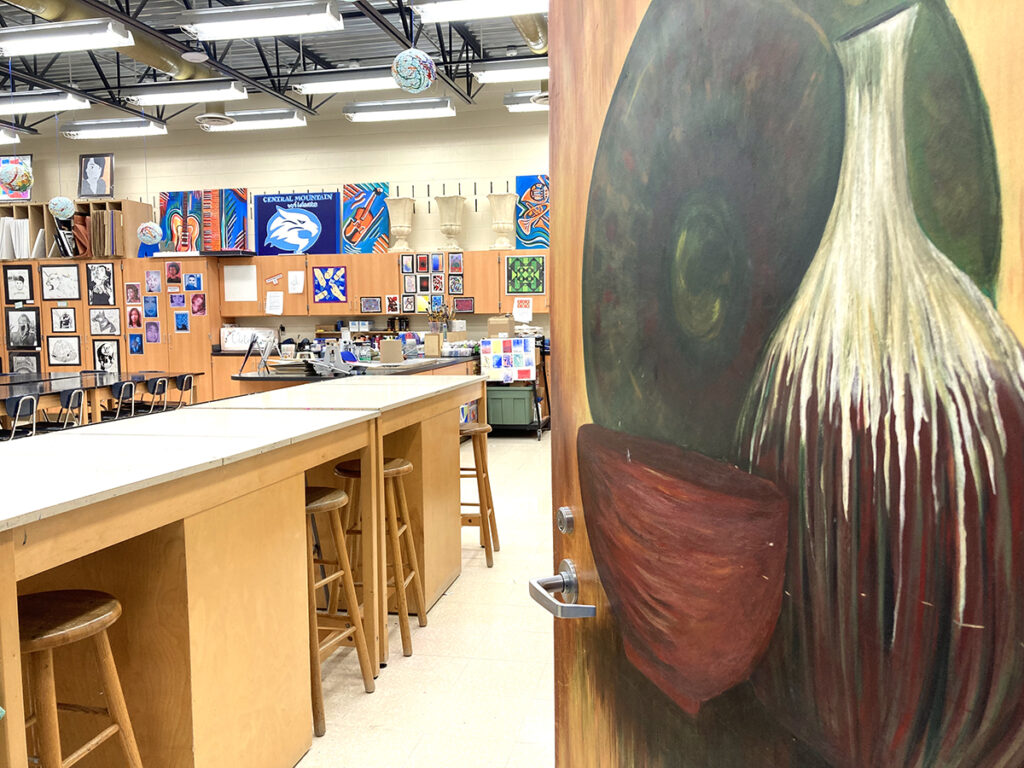
There are five things to think about before leaving art education.
It is possible you may be experiencing teacher burnout and just need a little support to push the reset button. If teaching is taking a toll on you, you feel stressed, or you want to reignite your passion for teaching art, continue reading the ideas below and check out the Pack, Curbing Art Teacher Burnout in PRO Learning.
1. Try a different approach.
As you evolve as art teachers, you may discover you have outgrown your original teaching philosophy. Stay updated on the latest trends in art education to impact the generations of students you teach and also guide your growth and development. Be willing to explore and implement something to better serve you, your students, and your situation.
2. Change grade levels.
Consider switching things around a bit. Changing the age level you serve can leave you feeling refreshed. Are you craving more depth and independence that secondary may offer? Do you need to be surrounded by young elementary artists who think of you as a celebrity every time it’s an art day?
3. Transfer schools or districts.
Your current working environment may not be the best fit for you. Angela Watson’s Truth for Teachers podcast offers insights and strategies to help you decide if you should switch schools or make some other big choices about the future of your teaching career.
4. Take a leadership position.
Chances are, you love helping others grow. You delight in the lightbulb moments you witness daily. What if you could shine your light even brighter by working with educators? Department leadership roles or instructional coaching positions may give you a deeper sense of purpose by giving you the knowledge that you are impacting lives beyond your own classroom walls.
5. Start a side hustle.
Look into activities that bring you joy. Pay attention to how you feel doing different tasks and take mental notes. Do you feel excited when telling stories about your art room happenings? Start a blog. Does leading PD sessions during an in-service give you a sense of accomplishment? Watch the Pack, Providing Personalized Professional Development in PRO Learning for ideas. Offer art educator workshops or apply to AOEU for one-time positions, such as a Video Content Creator, Art Ed NOW Conference Presenter, and occasionally a FLEX producer or PRO Facilitator. Do you get lost spending hours creating the perfect digital posters, curriculum guides, or lesson plans? Sell your resources. Are you running out of places in your home to show off your personal creations? Set up an Etsy store, exhibit your art at a local coffee shop, or sell your art at a consignment store.
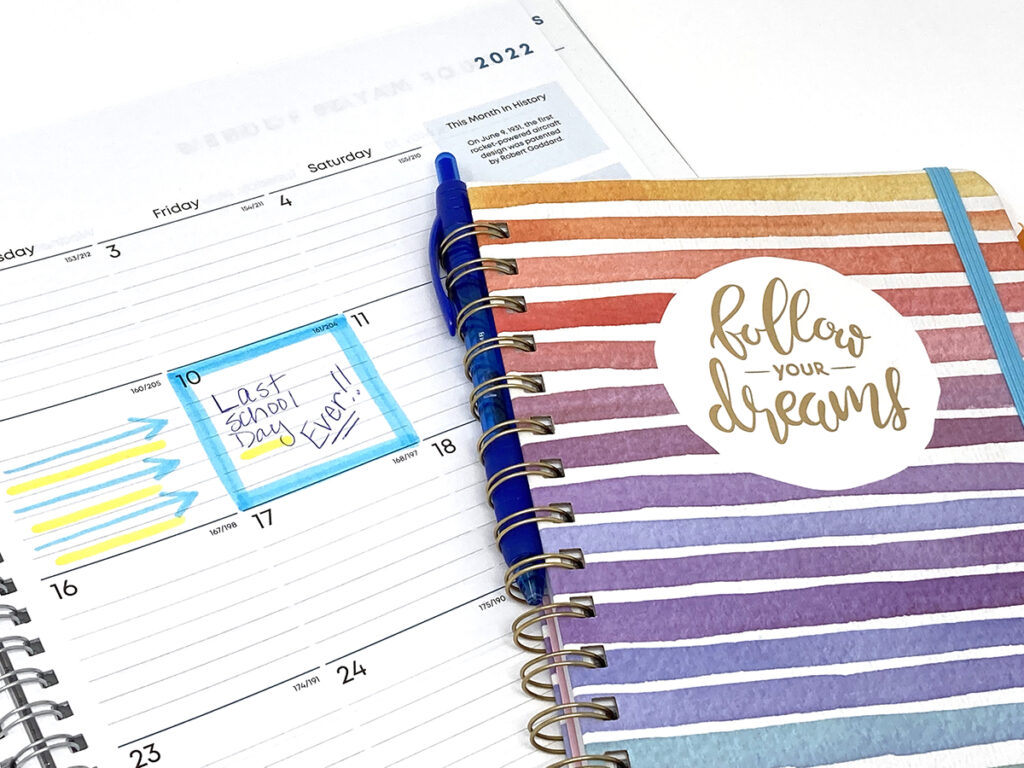
Once you are open to the realm of possibilities that lie ahead in your journey, you have taken the first step. You may begin exploring only to discover you need a simple change to create more happiness or work-life balance in your current role. The universe could also surprise you and take you exactly where you need to be. Regardless, we are here to help you grow and support you along the way.
Have you ever felt you are ready for a career change?
Who can you seek out for guidance on your career transition journey?
Magazine articles and podcasts are opinions of professional education contributors and do not necessarily represent the position of the Art of Education University (AOEU) or its academic offerings. Contributors use terms in the way they are most often talked about in the scope of their educational experiences.
